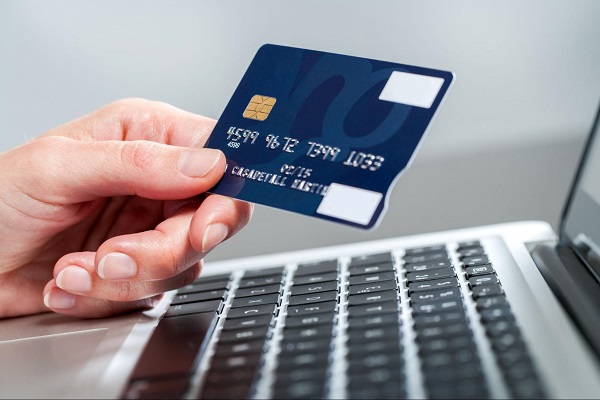What is a Credit Card?
A credit card is a thin, rectangular metal or plastic from a bank or other financial services company. People with credit cards can borrow money at stores that accept cards to pay for goods and services.
People with credit cards have to pay back the money they borrowed, plus interest and any other fees agreed upon, either in full by the maturity date or over time.
The credit card information includes the credit card number, cardholder’s name, expiration date, signature, CVC code, and other details. Credit cards are great because they don’t need to be linked to a bank account.
When you use your credit card, the amount is taken from your credit card limit, not your bank account. It can be used to buy food, clothes, medical bills, travel, and other necessities for everyday life or emergencies.
Benefits of Credit Card
These are the benefits of credit cards:
1. Keeps track of all transactions
Credit card companies, like banks and NBFCs, keep track of all cardholders’ transactions. So, users can track their spending and ensure they get the right bills.
2. The credit limit
Every credit card has a credit limit set by the company that gives you the card. That person can only spend as much as their card’s credit limit. Also, credit limits come in two different types: standard and revolving.
3. An alternative to cash
It’s not always possible to take cash with you. Also, a credit card will come in handy if you travel outside your home country and don’t have cash. Also, ATMs might not be available everywhere, so credit cards are a great way to get cash.
4. Higher fees for taking out cash
The interest rates are higher when you use a credit card to take cash. The interest rate could even be higher than the interest rate on a personal loan.
5. Costs and fees
Some of the fees that come with credit cards are the application fee, the monthly fee, the fee for taking out a cash advance, the fee for going over your credit limit, the late payment fee, and so on.
6. Offers like cashback, rewards, and more
Different types of credit cards come with different deals and savings. Depending on the card, you may be able to get cashback, reward points, a welcome bonus, savings, and more.
Types of Credit Card
You can reduce your choices because most credit cards fit a few groups. These are some kinds of credit cards:
0% APR Cards
Many credit cards offer interest-free loan terms lasting up to a year. You can get 0% APR on the best cards for 15, 18, 20, or 21 months. For example, the U.S. Bank Visa® Platinum Card has a 0% APR on purchases and debt transfers for the first 18 billing cycles. After that, the APR ranges from 18.74% to 29.74%. You have to transfer the balance within 60 days of starting the account.
Rewards Cards
Reward cards are great if you want cash back, points, or miles on everything you buy. Most of the time, you’ll get at least 1% back on everything you buy. The best cards give you four times on various purchases, from groceries and gas to food delivery and travel.
Secured Cards
Opening a protected card is one of the best things you can do if you are new to credit or have bad credit. You can use these cards like any other unprotected card, but you must put down a deposit (often $200) before getting a line of credit. You might even get a smaller $49 or $99 deposit with some cards, like the Capital One Platinum Secured Credit Card.
Business Cards
When a business owner gets a credit card, they can benefit from introductory 0% APR periods and rewards that can be used for typical business costs like shipping and travel. You can also use these cards to open staff cards, cutting costs.
How Do Credit Card Work?
Interest on your credit card balance is the amount of money you owe on your balance, which is found as a percentage of your total. This is how interest works:
Interest Rate: When you start a credit card account, you will be given an interest rate, which is also written as an APR. This is how much interest you are charged on your amount.
Calculation of Interest: The average daily amount of your credit card account over a billing cycle determines your interest rate.
The issuer will add up your daily balance at the end of each day and divide it by the number of payment cycles. This will give you the average daily balance.
Compounding Interest: Credit card interest builds up every day, meaning that interest is added to your amount daily. If you keep a balance from month to month, this can make it go up very quickly.
Minimum Payment: Your bill will have a minimum payment on it every month. You’ll be charged interest on the amount you still owe if you don’t pay it off by the due date.
You’ll pay more interest over time if you only make the minimum payment. It will also take longer to pay off your amount.
How to Build Credit History
Regular, non-secured, and secured credit cards can help people build a good credit past if used responsibly. They can also be used to make purchases online without carrying cash. Both types of credit cards report payments and purchases to the major credit bureaus.
Cardholders who use their cards carefully can build good credit scores, which can help them get more extensive lines of credit or, in the case of secured cards, the chance to get a regular credit card.
Making regular, on-time payments, avoiding late payments, keeping your credit utilization below your credit limit, and keeping your debt-to-income ratio low are all things that will help you build a good credit past.
Your credit score will increase if you make sensible purchases and pay them off on time. This will make you more appealing to other lenders.
Terms Used for Credit Card
When you ask for a credit card, you may come across terms you don’t understand. But it’s important to know what these names mean if you want to find the best card for your needs:
Rate of Interest
For the loan that banks give to their customers, interest is a fee that they charge. The interest rate differs for each card and people with different credit scores. You can usually avoid interest if you pay off your bill at the end of each billing term. If not, interest is added to any amount carried over monthly.
Annual Percentage Rate
This is another name for your credit card’s interest rate. It’s more often called your APR. An APR shows how much it costs to finance a loan, including any fees for taking the money. When you borrow money with a credit card, the APR and the interest rate are pretty much the same.
Credit Limit
A credit limit is the spending limit on a credit card. If you have little or no credit history, your first credit amount might be just a few hundred dollars. Credit limits can be much higher for people with cards before—often in the thousands of dollars.
Credit Score
A credit score is a number that tells banks and credit card companies how creditworthy you are or how much risk they are taking by giving you a credit card. Your credit score, which ranges from 300 to 850, is based on many things, such as how well you’ve paid your bills in the past.
Credit Card Balance
When your payment cycle is over, you’ll still owe the cards company the money you’ve spent on your card. This is called your imbalance.
Cash Advance
When you use your credit card to get cash, this is called a cash advance. There are often no grace periods for cash loans, meaning that interest starts to build up immediately.
What to Do and Not Do
You can use a card without debt if you know what to do and what not to do.
Do’s
- Keep track of when things are due.
- Look over your monthly bills.
- Always pay more than the bare amount.
- Talk to your suppliers to work out an APR.
- Pay about 10% of your cash toward your debts.
Don’t
- You shouldn’t use the whole cash amount.
- Don’t use reward credit cards if you can’t pay off your bills quickly.
- Credit should not be used instead of pay.
- Do not miss payments for more than the grace time.
- Don’t keep an amount from one month to the next.
Conclusion
Credit cards can benefit your finances if you know how to use them correctly. You can start looking into what different types of credit cards can offer people once you know how they work and how they can help you build credit.
Then, look at several different card brands and issuers to find the best one for your spending habits, income, and financial needs. After getting the best credit card for you, you can start building credit and using it to help you reach your long-term goals.



